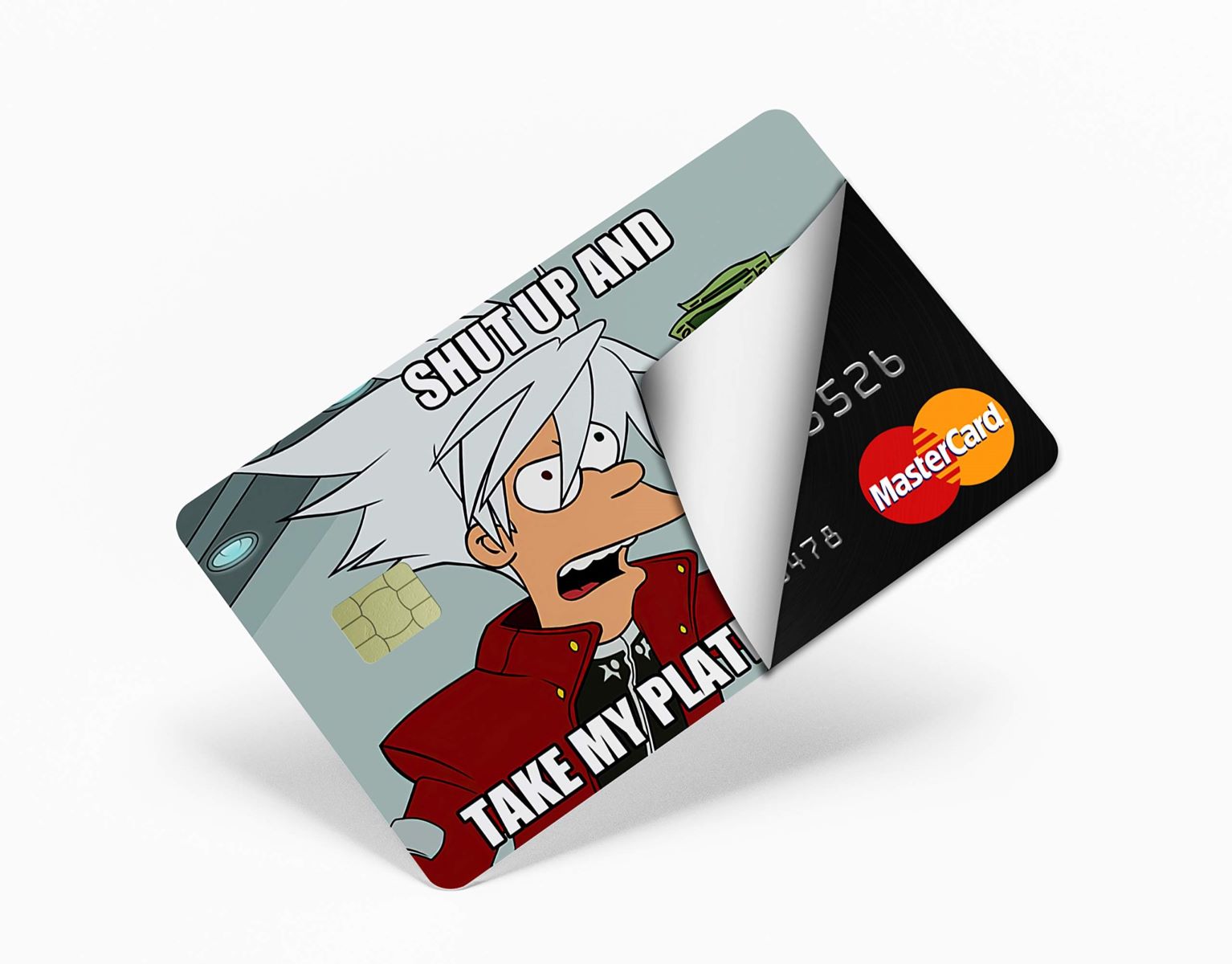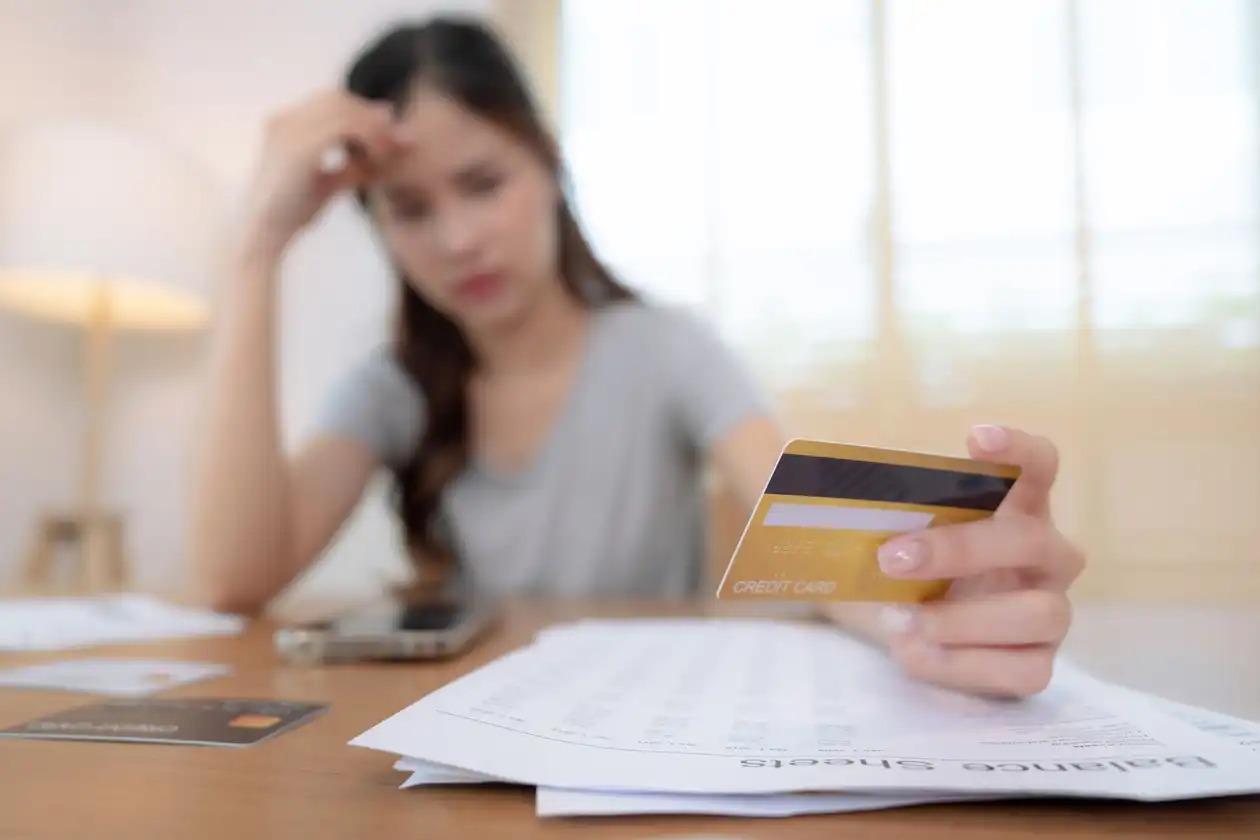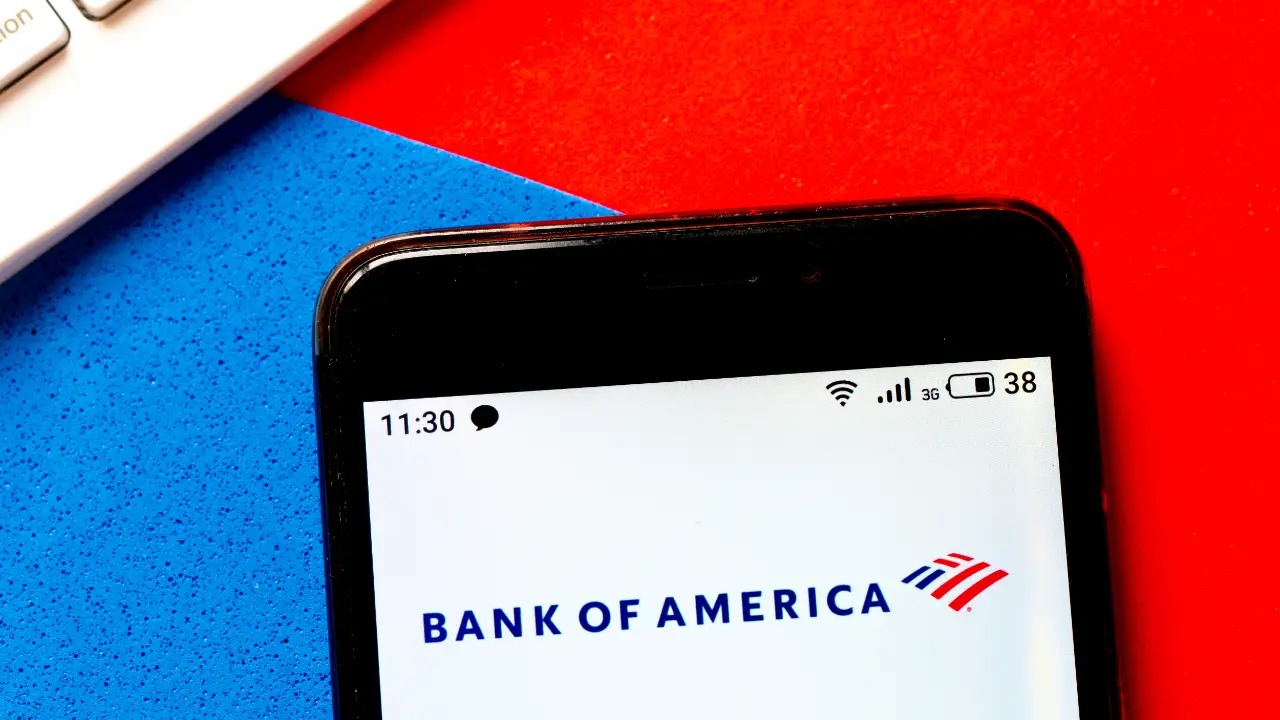

Finance
How To Get Sticker Residue Off Credit Card
Published: October 25, 2023
Learn how to remove sticker residue from your credit card with these easy finance tips. Safely clean and restore your card's appearance without damaging the surface.
(Many of the links in this article redirect to a specific reviewed product. Your purchase of these products through affiliate links helps to generate commission for LiveWell, at no extra cost. Learn more)
Table of Contents
Introduction
Have you ever purchased a new credit card only to find that it has a stubborn sticker residue on it? Dealing with sticker residue can be a frustrating experience, but fear not! In this article, we will provide you with effective methods and tips to remove sticker residue from your credit card without causing any damage.
Sticker residue can occur when the adhesive from a sticker or label remains on the surface even after the sticker is removed. It can be sticky, unsightly, and may even affect the functionality of your credit card. However, with the right supplies and techniques, you can easily get rid of the sticker residue and restore your credit card to its pristine condition.
Before we delve into the various methods, it’s important to understand the supplies you’ll need for removing sticker residue. Most methods require common household items, making them easily accessible to everyone. Some of the supplies you’ll need include rubbing alcohol, cooking oil, vinegar, baking soda, and nail polish remover. These items can effectively dissolve and loosen sticker residue, making it easier to remove.
Now, let’s explore the different methods for removing sticker residue from your credit card. Remember to perform a spot test on a small, inconspicuous area of your credit card before applying any method to ensure there is no adverse reaction.
Understanding Sticker Residue
Sticker residue is a common issue that occurs when the adhesive from a sticker or label adheres to a surface even after the sticker is peeled off. It can be sticky and stubborn, making it difficult to remove without leaving behind residue or damaging the underlying material.
The adhesive used in stickers is typically designed to be strong and long-lasting, ensuring that the sticker remains firmly in place. However, this also means that when you remove the sticker, some of the adhesive residue may remain on the surface. This residue can collect dust, dirt, and other particles, making it look unsightly.
Sticker residue can be particularly problematic when it comes to credit cards. Not only does it detract from the aesthetics of the card, but it can also interfere with the card’s functionality. Sticker residue may cause issues when inserting the card into card readers or when swiping it in a magnetic strip reader. Additionally, if left untreated, the residue can become harder to remove over time, making it even more challenging to restore your credit card to its original state.
It’s important to note that the method you choose to remove sticker residue depends on the material your credit card is made of. Most credit cards are made of plastic, but different types of plastic can react differently to certain substances. Therefore, it’s crucial to choose a method that is safe and effective for the specific type of plastic used in your credit card.
While sticker residue can be frustrating to deal with, it is completely removable. By following the methods outlined in this article, you can effectively eliminate sticker residue from your credit card and restore its appearance and functionality.
Supplies Needed
Before you begin the process of removing sticker residue from your credit card, it’s essential to gather the necessary supplies. Luckily, most of the supplies needed can be found in your own home. Here are the items you’ll need:
- Rubbing alcohol: This is an effective solvent that can dissolve the adhesive residue. Opt for isopropyl alcohol, preferably with a concentration of 70% or higher.
- Cooking oil: Common cooking oils like vegetable oil or olive oil can help break down the sticky residue. Make sure to choose a pure cooking oil without added flavors or seasonings.
- Vinegar: White vinegar is a versatile household item that can be used for a variety of cleaning purposes. It can also be effective in removing sticker residue.
- Baking soda: Baking soda is a mild abrasive that can help gently scrub away sticker residue without scratching the surface of your credit card.
- Nail polish remover: Nail polish remover containing acetone is another option for removing tough sticker residue. However, exercise caution as acetone may damage certain types of plastic, so perform a spot test first.
In addition to these supplies, you’ll also need some soft, lint-free cloths or cotton swabs to apply the cleaning solutions and wipe away the residue. Make sure to avoid using abrasive materials that could scratch the surface of your credit card.
Having these supplies readily available will ensure a smooth and successful sticker residue removal process. Now that you have gathered all the necessary items, let’s proceed to the methods for removing sticker residue from your credit card.
Methods for Removing Sticker Residue
Now that you have gathered the necessary supplies, let’s explore different methods for removing sticker residue from your credit card. Remember to perform a spot test on a small, inconspicuous area of your credit card before applying any method to ensure there is no adverse reaction.
1. Method 1: Using Rubbing Alcohol
Start by dampening a soft cloth or cotton swab with rubbing alcohol. Gently rub the sticker residue in a circular motion until it starts to dissolve. Continue rubbing until the residue is completely removed. Wipe the area with a clean cloth to remove any remaining alcohol.
2. Method 2: Using Cooking Oil
Apply a small amount of cooking oil to a cloth or cotton ball and gently rub it onto the sticker residue. Allow the oil to sit on the residue for a few minutes, then wipe away the residue with a clean cloth. If needed, repeat the process until the residue is completely gone. Clean the area with mild soap and water afterward to remove any excess oil.
3. Method 3: Using Vinegar
Soak a cloth or cotton swab in white vinegar and dab it onto the sticker residue. Allow the vinegar to penetrate the residue for a few minutes, then gently scrub the area with a soft cloth or sponge. Rinse the credit card thoroughly with water and pat it dry with a clean cloth.
4. Method 4: Using Baking Soda
Make a paste by mixing baking soda with a small amount of water. Apply the paste to the sticker residue and let it sit for a few minutes. Gently scrub the residue using a soft cloth or sponge. Rinse the credit card with water and wipe it dry with a clean cloth.
5. Method 5: Using Nail Polish Remover
If the sticker residue is particularly stubborn, you can try using nail polish remover. Dampen a cloth or cotton ball with nail polish remover containing acetone. Gently rub the residue in a circular motion until it starts to dissolve. Be cautious when using this method as acetone may damage certain types of plastic, so perform a spot test first. Rinse the credit card thoroughly with water after removing the residue.
Remember to use these methods with caution and gently work on removing the sticker residue to avoid causing any damage to your credit card. If one method doesn’t work, you can try a different one until the residue is completely gone.
Now that you know the methods for removing sticker residue, it’s important to be aware of some precautions and tips to ensure a successful and safe cleaning process. Let’s explore those in the next section.
Method 1: Using Rubbing Alcohol
Using rubbing alcohol is a popular and effective method for removing sticker residue from your credit card. Rubbing alcohol, also known as isopropyl alcohol, is a powerful solvent that can dissolve the adhesive and make it easier to wipe away the residue. Follow these steps to remove sticker residue using rubbing alcohol:
- Dampen a soft cloth or cotton swab with rubbing alcohol. Make sure to use a cloth or swab that won’t leave lint or fibers behind.
- Gently rub the sticker residue in a circular motion. Apply a bit of pressure while rubbing to help break down the adhesive.
- Continue rubbing until you see the sticker residue starting to dissolve. This may take a few minutes, especially for stubborn residue.
- Once the residue has loosened, use a clean area of the cloth or a fresh cotton swab to wipe away the residue.
- Inspect the credit card to ensure all the residue has been removed. If any residue remains, repeat the process.
- After the residue is gone, wipe the area with a clean cloth or tissue to remove any remaining alcohol.
It’s important to note that rubbing alcohol is safe to use on most types of plastic used in credit cards. However, it’s always a good idea to perform a spot test on a small, inconspicuous area of the card before applying rubbing alcohol to the entire surface. This will help ensure that there are no adverse reactions and prevent any potential damage.
In addition, avoid using excessive amounts of rubbing alcohol to prevent it from seeping into the card’s magnetic strip or chip, as this could potentially affect the card’s functionality.
Using rubbing alcohol is an effective method for removing sticker residue from your credit card. It can help restore the card’s appearance and ensure smooth usage. However, if rubbing alcohol doesn’t completely remove the residue, you can try other methods explained in this article.
Now that you know how to remove sticker residue with rubbing alcohol, let’s move on to the next method: using cooking oil.
Method 2: Using Cooking Oil
If you prefer a natural and gentle method for removing sticker residue from your credit card, using cooking oil can be a great option. Common cooking oils like vegetable oil or olive oil can help break down the sticky residue without causing any damage to the card’s surface. Follow these steps to remove sticker residue using cooking oil:
- Apply a small amount of cooking oil to a soft cloth or cotton ball. Make sure to choose a pure cooking oil without added flavors or seasonings.
- Gently rub the cooking oil onto the sticker residue. Allow the oil to sit on the residue for a few minutes. This will help soften the adhesive and make it easier to remove.
- Using a clean area of the cloth or a fresh cotton ball, wipe away the residue. You may need to apply a bit of pressure and repeat the process for stubborn residue.
- Once the residue is gone, clean the area with mild soap and water to remove any excess oil residue.
- Rinse the credit card thoroughly with water and pat it dry with a clean cloth.
Cooking oil is a safe and gentle option for removing sticker residue from your credit card. It is less likely to cause any damage or discoloration. However, it’s still important to perform a spot test on a small, inconspicuous area of the card to ensure there are no adverse reactions.
After using cooking oil, you may notice a slight oily residue on the card. This can easily be removed by cleaning the card with mild soap and water. Make sure to dry the card thoroughly after cleaning to prevent any damage or water spots.
If cooking oil doesn’t completely remove the sticker residue, you can try other methods outlined in this article to achieve the desired result. Remember, it’s essential to be patient and gentle while removing sticker residue to avoid any potential damage to your credit card.
Now that you know how to use cooking oil to remove sticker residue, let’s move on to the next method: using vinegar.
Method 3: Using Vinegar
If you’re looking for a natural and multi-purpose household item to remove sticker residue from your credit card, vinegar is a great option. White vinegar is known for its cleaning properties and can effectively break down adhesive residue. Follow these steps to remove sticker residue using vinegar:
- Soak a soft cloth or cotton swab in white vinegar. Make sure the cloth or swab is damp but not dripping.
- Dab the vinegar-soaked cloth or swab onto the sticker residue. Allow the vinegar to penetrate the residue for a few minutes. This will help soften the adhesive.
- Gently scrub the area with a soft cloth or sponge. Use a circular motion to work on the residue and gradually lift it away.
- Rinse the credit card thoroughly with water to remove any vinegar residue.
- Pat the card dry with a clean cloth to prevent water spots.
White vinegar is generally safe to use on most types of plastic, but it’s still a good idea to perform a spot test on a small, inconspicuous area of the credit card to ensure compatibility.
It’s important to note that the odor of vinegar may linger after cleaning. If you find the smell unpleasant, you can wipe the card with a damp cloth soaked in water or use a mild soap solution for a final cleansing.
Using vinegar as a natural cleaning agent is not only effective but also environmentally friendly. It can safely remove sticker residue from your credit card without causing any damage. However, if vinegar doesn’t completely remove the residue, you can try other methods explained in this article.
Now that you know how to remove sticker residue using vinegar, let’s move on to the next method: using baking soda.
Method 4: Using Baking Soda
If you’re looking for a natural and gentle abrasive to remove sticker residue from your credit card, baking soda is a great option. Baking soda, also known as sodium bicarbonate, can help scrub away the sticky residue without scratching the surface of your card. Follow these steps to remove sticker residue using baking soda:
- Make a paste by mixing baking soda with a small amount of water. The consistency should be thick enough to spread easily but not runny.
- Apply the baking soda paste directly to the sticker residue on your credit card.
- Leave the paste on the residue for a few minutes to allow it to penetrate and loosen the adhesive.
- Gently scrub the area using a soft cloth or sponge. Use circular motions to work the baking soda paste into the residue and lift it away.
- Rinse the credit card thoroughly with water to remove any baking soda residue.
- Pat the card dry with a clean cloth to prevent water spots.
Baking soda is a mild abrasive, making it a safe option for removing sticker residue without causing damage. However, it’s always a good idea to perform a spot test on a small, inconspicuous area of the card to ensure there are no adverse reactions.
Remember to be gentle while scrubbing with baking soda to avoid scratching the surface of your credit card. If the residue is particularly stubborn, you can let the baking soda paste sit on the area for a longer period before scrubbing.
Using baking soda is an effective and affordable way to remove sticker residue from your credit card. It can help restore the card’s appearance without the need for harsh chemicals. If baking soda doesn’t completely remove the residue, you can try other methods explained in this article.
Now that you know how to use baking soda to remove sticker residue, let’s move on to the next method: using nail polish remover.
Method 5: Using Nail Polish Remover
If you’re dealing with stubborn sticker residue on your credit card, using nail polish remover can be an effective option. Nail polish removers often contain acetone, which can help dissolve the adhesive and make it easier to remove the residue. However, it’s important to exercise caution when using nail polish remover, as acetone can potentially damage certain types of plastic. Follow these steps to remove sticker residue using nail polish remover:
- Dampen a soft cloth or cotton ball with nail polish remover that contains acetone.
- Gently rub the cloth or cotton ball onto the sticker residue, applying a bit of pressure. The acetone in the nail polish remover will start to dissolve the adhesive.
- Continue rubbing in a circular motion until the residue begins to lift off the card.
- Use a clean area of the cloth or a fresh cotton ball to wipe away the residue.
- Rinse the credit card thoroughly with water to remove any nail polish remover residue.
- Pat the card dry with a clean cloth to prevent water spots.
It’s crucial to perform a spot test on a small, inconspicuous area of your credit card before using nail polish remover. This will help you determine if the plastic is compatible with acetone and prevent any potential damage. If you notice any adverse reactions during the spot test, refrain from using nail polish remover on your credit card.
It’s also worth noting that prolonged exposure to acetone can cause some plastics to become hazy or discolored. Therefore, it’s best to use nail polish remover sparingly and only on the areas with sticker residue.
Using nail polish remover can be an effective method for removing stubborn sticker residue from your credit card. However, it is important to exercise caution and perform a spot test to ensure the safety of your card’s plastic. If nail polish remover doesn’t completely remove the residue, you can try other methods mentioned in this article.
Now that you know how to use nail polish remover to remove sticker residue, let’s move on to the next section, which covers precautions and tips to help you during the sticker residue removal process.
Precautions and Tips
When it comes to removing sticker residue from your credit card, it’s important to follow some precautions and tips to ensure a successful and safe cleaning process. Here are some guidelines to keep in mind:
Perform a spot test:
Before applying any cleaning method or solution to the entire surface of your credit card, it’s essential to perform a spot test on a small, inconspicuous area. This will help you determine if the method or solution is safe for your card’s plastic. If you notice any adverse reactions during the spot test, refrain from using it on the rest of the card.
Use gentle, non-abrasive materials:
When cleaning your credit card, use soft cloths, cotton swabs, or sponges that won’t scratch or damage the surface. Avoid using abrasive materials, such as rough towels or harsh cleaning pads, as they can cause scratches or degradation of the plastic.
Avoid excessive moisture:
While it’s important to use water or cleaning solutions to rinse off residues, make sure to avoid excessive moisture on your credit card. Water can potentially seep into sensitive parts of the card, such as the magnetic strip or chip, which may compromise its functionality. Pat the card dry with a clean cloth after rinsing to remove excess moisture.
Be patient and gentle:
Removing sticker residue may take some time and patience. Avoid using excessive force or harsh scraping, as this can damage the card’s surface. Instead, gently work on the residue, applying slight pressure to lift it off without causing any harm.
Finish with mild soap and water:
After removing the sticker residue, it’s a good idea to clean the card with mild soap and water. This will help remove any leftover cleaning agents or residues, leaving the card clean and free from any potential chemical reactions.
Keep chemicals away from magnetic strips or chips:
When using cleaning solutions or products, be careful to avoid contact with the magnetic strip or chip on your credit card. Harsh chemicals or excessive moisture can potentially damage these important components and affect the card’s functionality.
By following these precautions and tips, you can effectively remove sticker residue from your credit card without causing any damage. Remember to approach the cleaning process with care and patience, and always prioritize the safety and integrity of your card.
Now that you’re equipped with the necessary precautions and tips, you can confidently proceed with removing sticker residue from your credit card.
Conclusion
Dealing with sticker residue on your credit card can be frustrating, but with the right methods and supplies, you can effectively remove it and restore your card to its original condition. Whether you choose to use rubbing alcohol, cooking oil, vinegar, baking soda, or nail polish remover, each method offers a unique approach to breaking down the adhesive and removing the residue.
It’s important to remember to perform a spot test before applying any cleaning method or solution to your entire credit card. This will help ensure that the method is safe for your card’s specific type of plastic and prevent any potential damage.
Additionally, following precautions such as using gentle materials, avoiding excessive moisture, and being patient and gentle during the cleaning process will help protect your credit card from any harm or scratches.
By gathering the necessary supplies and applying the methods outlined in this article, you can easily remove sticker residue from your credit card and restore its appearance and functionality. Remember to finish with a mild soap and water clean and ensure the card is thoroughly dried to remove any remaining residue or moisture.
Now that you have the knowledge and tools to tackle sticker residue on your credit card, you can confidently maintain and present a clean and professional card. Enjoy your sticker-free credit card and the peace of mind that comes with it!














